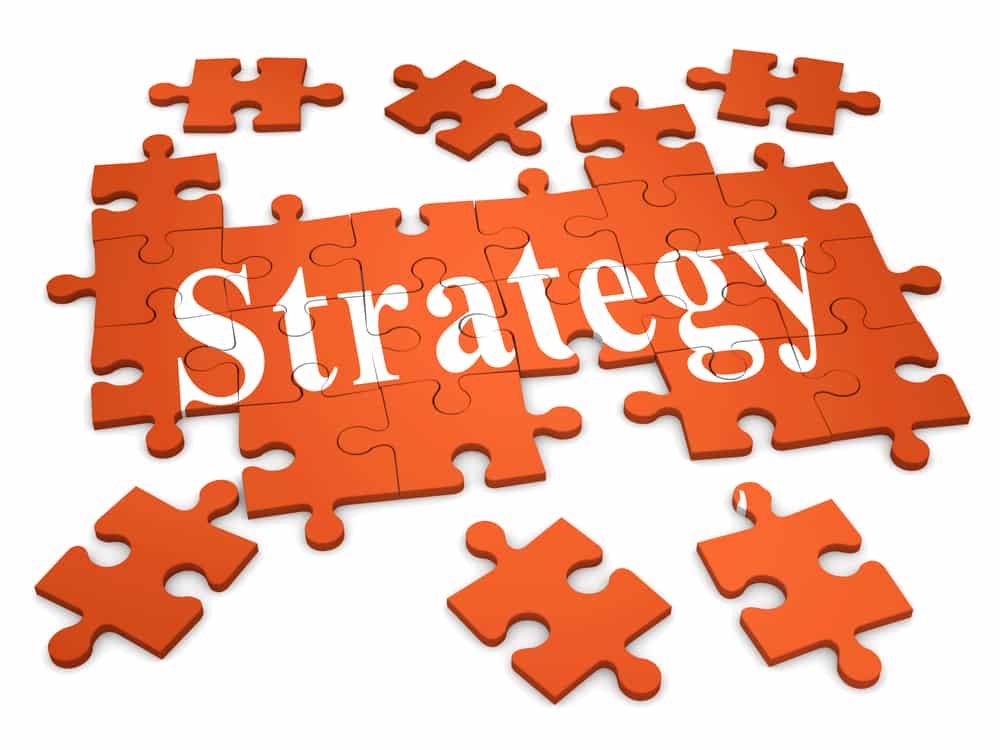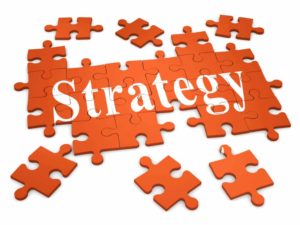Why Isn’t My Strategy Working? It’s Broken That’s Why.

Who goes to market with a bad revenue strategy?
No one! Everyone believes they have a winning strategy for the market.
 No matter how you have been doing a strategy, it was probably broken. It was broken because it was based on 20th century fulfillment business model (just build cool stuff, and someone will buy it). In the 21st century strategy, the model the will work has different requirements. The 21st century is about engaging with your customers so both of you are better off than any other option.
No matter how you have been doing a strategy, it was probably broken. It was broken because it was based on 20th century fulfillment business model (just build cool stuff, and someone will buy it). In the 21st century strategy, the model the will work has different requirements. The 21st century is about engaging with your customers so both of you are better off than any other option.
In the 21st century, you need a strategy that gets you to that win-win relationship with your customers.
The 21st century requires a five level strategy model. The model is predictable, easy and will get you more profit faster. Skipping a step or changing the order is almost always fatal.
Level I – “WHY” your Brand should exist
Declare “WHY” you are in business and then build a culture to support your “WHY.” Share it in a way that defines the experience your customers, staff and partners will have every time. The “Why” becomes real when based on a culture that includes:
- Mission / Purpose
- Vision
- Values
- Brand
- Goals
- Culture
- Principles
Level II – Is an Aligned Revenue Strategy to Monetize your “WHY”
After you have declared your “WHY” and everyone is busting with passion about the vision, the brand and being part of the culture, it is time to monetize that dream. Level II determines if customers, partners and investors will join you by saying yes. A compelling Level II Revenue Strategy is a result of answering the following 5 Revenue Strategy questions such that they are aligned to your “WHY” and deployable:
- What is the Brand Promise the market can expect EVERY time?
- What is the customer’s problem solved for the customer that no one else solves?
- What are the niche or niches dominated or to be dominated?
- Who is the “ideal buyer” in the niches?
- What offer or offers will compel the ideal buyer to buy and pay for the value for the problem solved?
Level III – A Revenue Plan that deploys the Level II Revenue Strategy
With Level II in place, everyone is clear about the strategy to monetize the “WHY,” and now the next step is to deploy the revenue strategy complete with a “True North,” a Revenue RoadMap and aligned metrics. Deployment must be both aligned to the “WHY” and the revenue strategy. If there is no alignment, no leverage or negative leverage, the result of the strategy will be fatal.
Level III is about the organization deploying the revenue strategy that achieves the required outcomes based on Revenue RoadMap metrics. If that level of achievement is not possible, Level II much be revisited and adjusted to assure aligned, highly leveraged and achievable outcomes across the organization at Level III.
Level III is your “WHY” being monetized by the deployment of your Revenue Strategy, which is managed by the cross-organizational Revenue RoadMap metrics and accountability
Level IV – The organizational plan to achieve Revenue Strategy Outcomes
The only way any organization survives or thrives is to continually produce more profitable revenue. Each part of the organization exists to support the growth of more profitable revenue (there is no other reason to exist) in alignment with your “WHY”. The support is measured by alignment, outcomes and degree of leverage achieved based on the resources committed to the Revenue RoadMap.
Level IV starts from the organization wide plan to deploy the revenue strategy to achieve the required outcomes. Each part of the organization is part of this plan, and each part must align their part to support the plan’s requirements.
The combination of all parts of the organization result in The total Business Plan which supports the Revenue Plan outcomes, which are aligned to the “Business Strategy.”
Level V – Leveraged Resource allocation supporting deployment
In the 20th century, financial planning was considered by many to be “strategic planning.” In the 21st century, financial planning is Level V, the final step. The purpose is to be sure, each part of the organization has the resources required to successful achieve the outcomes from the deployable revenue strategy.
Anytime there is a resource shortage, the question becomes how can various parts of the organization reassign outcomes or resources to achieve the Revenue Strategy goals.
If the answer is there are not enough resources to achieve the required outcomes, then the deployment (Level III) model and or the revenue strategy (Level II) need to be adjusted to reflect the greatest set of outcomes possible based on the Revenue Resources Required and leverage attainable from those resources.
Budgets, programs, process and metrics are required for the Business Plan to predictably accomplish the deployment of the “Revenue Strategy.” This is always based on achieving the critical metrics with the resources available.
Doing a few of the levels in random order worked in the 20th century for the simple reason that the 20th century was about fulfilling customer demand that appeared as if it would go on forever. In the 21st century, there are an abundance of organizations with the ability to fulfill, so delivering value to the customer is key to surviving and thriving.
Delivering value is at least as much about engagement as product, which requires Levels I to Level V be planned and deployed in this order to dominate and thrive.
Doing the five levels in order is much easier than the old way because the old way has been broken and creates chaos.
For a strategy to work, just start at the top and work down!
Category: Business Growth & Strategy
Tags: Vistage International


Sorry but I don’t agree with this article. And that’s being polite! Here’s why:
1. There is no evidence that ‘everyone believes they have a winning strategy’. In my experience, many businesses are dissatisfied with their strategy and are always looking for a better one.
2. There is no evidence that the 20th century business model in most industries was ‘build cool stuff and someone will buy it. This thing called ‘marketing’ was invented mid-century, based on the idea that you made what you thought consumers wanted to buy. Many successful businesses were based on this concept.
3. There is nothing even remotely new about the idea that ‘delivering value to the customer’ is important. This has been enshrined in business and marketing theory and practice for decades.
Mark,
Thanks for the polite feedback and very specific input. My hope is we get to have coffee to explore this deeper, but until then I want to be sure you get appropriate feedback.
Your point that not everyone believes they have a winning strategy and many businesses are dissatisfied with their strategy certainly has merit. On the other hand I don’t know many owner / operators who go to market with less than the strategy they believe has the greatest chance to win. As you point out in this rapidly changing world they better always be looking for a better one. So your observations make perfect sense.
Since research shows the one thing that determines an organizations survival is to continually grow more profitable revenue. This articles purpose is to alert owner / operators that they can develop a deployable revenue growth strategy for the short-term if they do the work in the 5 strategy levels. As you have said it is critical keep reviewing those 5 levels from the market back to continuously improve both the strategy and the outcomes. This continuous improvement will evolve the strategy from short-term to long-term.
As you probably noticed the 5 levels align the “worthy intention” for which your business exists, with the 5 Revenue Strategy Questions, to the deployment of customer value and the monetization for the effort. This deployment is supported organization wide by human, financial and infrastructure resources aligned to the required Revenue Strategy outcomes (and can be morphed based on market change).
As you point out a critical part of the organization resource deployment is marketing as well as sales, delivery, CS, etc.
It seems like your feedback and the 5 Strategy Levels are a good match? Let me know when you have time for coffee.